Frymaster FOOTPRINT H50 User manual
- Category
- Deep fryers
- Type
- User manual

Frymaster, a member of the Commercial Food Equipment Service Association, recommends
using CFESA Certified Technicians.
24-Hour Service Hotline 1-800-551-8633
JUNE 2009
www.frymaster.com
Email: [email protected]
*8196083*
Pro H50/55-Series Gas Fryers
Service and Parts Manual

NOTICE
IF, DURING THE WARRANTY PERIOD, THE CUSTOMER USES A PART FOR THIS ENODIS
EQUIPMENT OTHER THAN AN UNMODIFIED NEW OR RECYCLED PART PURCHASED
DIRECTLY FROM FRYMASTER DEAN, OR ANY OF ITS AUTHORIZED SERVICE CENTERS,
AND/OR THE PART BEING USED IS MODIFIED FROM ITS ORIGINAL CONFIGURATION, THIS
WARRANTY WILL BE VOID. FURTHER, FRYMASTER DEAN AND ITS AFFILIATES WILL NOT BE
LIABLE FOR ANY CLAIMS, DAMAGES OR EXPENSES INCURRED BY THE CUSTOMER WHICH
ARISE DIRECTLY OR INDIRECTLY, IN WHOLE OR IN PART, DUE TO THE INSTALLATION OF
ANY MODIFIED PART AND/OR PART RECEIVED FROM AN UNAUTHORIZED SERVICE CENTER.
NOTICE
This appliance is intended for professional use only and is to be operated by qualified
personnel only. A Frymaster DEAN Factory Authorized Service Center (FASC) or other qualified
professional should perform installation, maintenance, and repairs. Installation, maintenance,
or repairs by unqualified personnel may void the manufacturer’s warranty. See Chapter 1 of
this manual for definitions of qualified personnel.
NOTICE
This equipment must be installed in accordance with the appropriate national and local codes of
the country and/or region in which the appliance is installed. See NATIONAL CODE
REQUIREMENTS in Chapter 2 of this manual for specifics.
NOTICE TO U.S. CUSTOMERS
This equipment is to be installed in compliance with the basic plumbing code of the Building
Officials and Code Administrators International, Inc. (BOCA) and the Food Service Sanitation
Manual of the U.S. Food and Drug Administration.
NOTICE
Drawings and photos used in this manual are intended to illustrate operational, cleaning and
technical procedures and may not conform to onsite management operational procedures.
NOTICE TO OWNERS OF UNITS EQUIPPED WITH COMPUTERS
U.S.
This device complies with Part 15 of the FCC rules. Operation is subject to the following two
conditions: 1) This device may not cause harmful interference, and 2) This device must accept
any interference received, including interference that may cause undesired operation. While
this device is a verified Class A device, it has been shown to meet the Class B limits.
CANADA
This digital apparatus does not exceed the Class A or B limits for radio noise emissions as set
out by the ICES-003 standard of the Canadian Department of Communications.
Cet appareil numerique n’emet pas de bruits radioelectriques depassany les limites de classe A
et B prescrites dans la norme NMB-003 edictee par le Ministre des Communcations du Canada.
DANGER
Improper installation, adjustment, maintenance or service, and unauthorized alterations or
modifications can cause property damage, injury, or death. Read the installation, operating,
and service instructions thoroughly before installing or servicing this equipment. Only qualified
service personnel may convert this appliance to use a gas other than that for which it was
originally configured.

DANGER
No structural material on the fryer should be altered or removed to accommodate placement of
the fryer under a hood. Questions? Call the Frymaster Dean Service Hotline at 1-800-551-8633.
DANGER
Adequate means must be provided to limit the movement of this appliance without depending
upon the gas line connection. Single fryers equipped with legs must be stabilized by installing
anchor straps. All fryers equipped with casters must be stabilized by installing restraining
chains. If a flexible gas line is used, an additional restraining cable must be connected at all
times when the fryer is in use.
DANGER
The front ledge of the fryer is not a step! Do not stand on the fryer. Serious injury can result
from slips or contact with the hot oil.
DANGER
Do not store or use gasoline or other flammable liquids or vapors in the vicinity of this or any
other appliance.
DANGER
Instructions to be followed in the event the operator smells gas or otherwise detects a gas leak
must be posted in a prominent location. This information can be obtained from the local gas
company or gas supplier.
DANGER
This product contains chemicals known to the state of California to cause cancer and/or birth
defects or other reproductive harm.
Operation, installation, and servicing of this product could expose you to airborne particles of
glasswool or ceramic fibers, crystalline silica, and/or carbon monoxide. Inhalation of airborne
particles of glasswool or ceramic fibers is known to the State of California to cause cancer.
Inhalation of carbon monoxide is known to the State of California to cause birth defects or other
reproductive harm.
DANGER
The crumb tray in fryers equipped with a filter system must be emptied into a fireproof container
at the end of frying operations each day. Some food particles can spontaneously combust if left
soaking in certain shortening material.
WARNING
Do not bang fry baskets or other utensils on the fryer’s joiner strip. The strip is present to seal
the joint between the fry vessels. Banging fry baskets on the strip to dislodge shortening will
distort the strip, adversely affecting its fit. It is designed for a tight fit and should only be
removed for cleaning.

PRO H50/55-SERIES GAS FRYERS
TABLE OF CONTENTS
i
CHAPTER 1: Service Procedures
1.1 Functional Description.................................................................................................................................. 1-1
1.1.1 The Electronic Ignition System................................................................................................... 1-1
1.1.2 Interface Board............................................................................................................................ 1-2
1.1.3 Thermostats................................................................................................................................. 1-4
1.2 Accessing Fryers for Servicing..................................................................................................................... 1-4
1.3 Cleaning the Gas Valve Vent Tube............................................................................................................... 1-5
1.4 Checking the Burner Manifold Gas Pressure................................................................................................ 1-5
1.5 Measuring Flame Current.............................................................................................................................. 1-7
1.6 Replacing Fryer Components........................................................................................................................ 1-7
1.6.1 Replacing the Controller or the Controller Wiring Harness........................................................ 1-7
1.6.2 Replacing the Temperature Probe or High-Limit Thermostat..................................................... 1-8
1.6.3 Replacing the Interface Board..................................................................................................... 1-9
1.6.4 Replacing an Ignition Module..................................................................................................... 1-9
1.6.5 Replacing an Ignitor Assembly................................................................................................. 1-10
1.6.6 Replacing or Cleaning a Combustion Air Blower..................................................................... 1-10
1.6.7 Replacing a Gas Valve .............................................................................................................. 1-13
1.6.8 Replacing a Burner Assembly................................................................................................... 1-14
1.6.9 Replacing the Filter Motor, Filter Pump, or Filter Pump Solenoid Valve................................. 1-15
1.6.10 Replacing the Frypot................................................................................................................. 1-16
1.6.11 Replacing Frypot Insulation and/or Upper Burner Rails........................................................... 1-18
1.7 Troubleshooting and Problem Isolation ...................................................................................................... 1-23
1.7.1 Ignition Failure.......................................................................................................................... 1-23
1.7.2 Improper Burner Function......................................................................................................... 1-24
1.7.3 Improper Temperature Control.................................................................................................. 1-26
1.7.4 Computer Malfunctions............................................................................................................. 1-26
1.7.5 Filtration Malfunctions.............................................................................................................. 1-27
1.7.6 Leakage..................................................................................................................................... 1-29
1.7.7 Basket Lift Malfunctions........................................................................................................... 1-29
1.7.8 Interpretation of Digital Controller Lights ................................................................................ 1-31
1.8 Troubleshooting Guides.............................................................................................................................. 1-31
1.8.1 Troubleshooting the 24 VAC Circuit........................................................................................ 1-31
1.8.2 Troubleshooting the Gas Valve................................................................................................. 1-35
1.8.3 Troubleshooting the Temperature Probe................................................................................... 1-35
1.8.4 Probe Resistance Chart..................................................................................................
............ 1-36
1.9 Simplified Wiring Diagrams....................................................................................................................... 1-37
1.9.1 Full-Vat Dual-Spark Module Wiring Diagram.......................................................................... 1-37
1.9.2 Full-Vat Single-Spark Module Wiring Diagram (Australia & Pacific Rim)............................. 1-38
1.9.3 Dual-Vat Dual-Spark Module Wiring Diagram........................................................................ 1-39
1.10 Principal Wiring Connections..................................................................................................................... 1-40
1.11 Wiring Diagrams......................................................................................................................................... 1-41
1.11.1 Pro H50/55-Series Fryer, Multi-vat........................................................................................... 1-41
1.11.2 Pro H50/55-Series Fryer, Single, Full-vat................................................................................. 1-42
1.11.3 Pro H50/55-Series Fryer, Single, Dual-vat................................................................................ 1-43
1.11.4 Pro H50/55-Series Fryer, Single, CE......................................................................................... 1-44
1.11.5 Pro H50/55-Series Fryer, Single, FAST-ready.......................................................................... 1-45
1.11.6 Transformer/Filter Boxes.......................................................................................................... 1-46
1.11.6.1 MPH150/155 Transformer/Filter Box....................................................................................... 1-46
1.11.6.2 FPH150/155 Transformer/Filter Box........................................................................................ 1-46
1.11.6.3 FPPH250/255/450/455 Transformer/Filter Box........................................................................ 1-47

PRO H50/55-SERIES GAS FRYERS
TABLE OF CONTENTS
ii
1.11.6.4 FPPH350/355 Transformer/Filter Box.......................................................................................1-48
1.11.7 Modular Basket Lift (100/120V)................................................................................................1-49
1.11.8 Modular Basket Lift (208/250V)................................................................................................1-50
1.11.9 Oil Return/Disposal....................................................................................................................1-51
CHAPTER 2: Parts List
2.1 Accessories ................................................................................................................................................... 2-1
2.2 Basket Lift Assemblies and Component Parts.............................................................................................. 2-2
2.3 Cabinetry....................................................................................................................................................... 2-4
2.3.1 Backs, Doors, Flue Caps, Sides, and Top Caps........................................................................... 2-4
2.3.2 Filter Cabinet Bases, Casters, Framing, and Related Components ............................................. 2-6
2.3.3 Non-Filter Cabinet Bases, Casters, Framing, and Related Components..................................... 2-8
2.4 Controllers....................................................................................................................................................2-10
2.5 Drain, Filtration, and Oil Return System Components ................................................................................2-11
2.5.1 Filtration System Components...................................................................................................2-11
2.5.2 Drain Valves and Associated Components ................................................................................2-13
2.5.3 Oil Return Line Components .....................................................................................................2-15
2.5.4 Oil Return Handle, Oil Disposal and Disposal Hose Components.............................................2-17
2.5.5 Oil Disposal Wand Assembly ....................................................................................................2-19
2.5.6 Assembly Wand Plumbing.........................................................................................................2-19
2.5.7 Rear Flush Oil Return Components ...........................................................................................2-20
2.5.8 Power Shower Assemblies.........................................................................................................2-22
2.6 Electronics and Electrical Components........................................................................................................2-23
2.6.1 Component Boxes......................................................................................................................2-23
2.6.2 Transformer Boxes.....................................................................................................................2-25
2.6.3 High-Limit Thermostat and Temperature Probe........................................................................2-27
2.7 Frypots and Associated Components...........................................................................................................2-28
2.7.1 Full-Vat Frypot Components .....................................................................................................2-28
2.7.2 Dual-Vat Frypot Components....................................................................................................2-30
2.8 Gas Supply and Combustion System Components......................................................................................2-32
2.9 Gas Valves and Associated Components.....................................................................................................2-34
2.10 Wiring Assemblies and Harnesses...............................................................................................................2-36
2.11 Miscellaneous Connectors and Terminals....................................................................................................2-38
CHAPTER 3: Single H50/55 Unit Unique Parts List
3.1 Filtration System Components...............................................................................................
....................... 3-1
3.2 Oil Return Components................................................................................................................................. 3-2
3.3 Component Boxes......................................................................................................................................... 3-3
3.4 High-Limit Thermostat and Temperature Probe........................................................................................... 3-4
3.5 Transformer Boxes........................................................................................................................................ 3-5

1-1
Inside the Ignition Module
TD
Out to
Gas Valve
To Alarm
25 V +
GND
HV
Ignition Wire Flame Sensor
Coil
PRO H50/55-SERIES GAS FRYERS
CHAPTER 1: SERVICE PROCEDURES
1.1 Functional Description
Pro (H50/55) Series gas fryers contain a welded stainless steel frypot that is directly heated by a high
efficiency infrared burner system requiring approximately 43% less energy than conventional
burners to cook the same volume.
Self-contained combustion chambers (referred to as “burners”) are fitted into rails attached to the
sides of the frypot, one on each side. Each combustion chamber is fitted with special ceramic tiles
that are heated by burning a forced air/gas mixture. The tiles transfer heat to the frypot by means of
infrared radiation, providing much more constant and uniform heat dispersion over the surface of the
frypot than conventional burners. Because less heat is lost to the atmosphere in the process,
compared to “open-burner” designs, less fuel is required to achieve and maintain temperature.
In full-vat units, gas flow to both of the burners is regulated by one electromechanical gas valve. In
dual-vat units, each burner has its own valve. All fryers in this series are equipped with 24 VAC gas
valve systems and electronic ignition.
1.1.1 Electronic Ignition System
An ignition module mounted in the component box
(located behind the control panel) is connected to an
ignitor assembly at the burner. The ignition module
performs four important functions: it provides fuse
protection for the 24-volt circuit, provides an ignition
spark, supplies voltage to the gas valve, and proofs the
burner flame. The module contains a 4-second time delay
circuit and a coil that activates the gas valve. Three types
are in use. A closed-box design is used in most fryers, but
in some fryers built for export, the module resembles an
interface board. A single dual-spark module is used on
current production full-vat fryers. All dual-vat fryers use
two single-spark modules.
The ignitor assembly consists of a spark plug, an
enrichment tube, and a flame sensor.
At start-up, the power switch is placed in the ON position, supplying approximately 12-volts DC to
the heat-control circuitry in the controller or computer and to one side of the heat relay coils on the
interface board. If resistance in the temperature probe indicates the temperature in the frypot is
below 180ºF (82ºC), the current flows through a melt cycle circuit where a timer switch alternately
closes for 6 seconds and opens for 24 seconds. If the temperature is 180ºF (82ºC) or above, the
current flows through a heat circuit, bypassing the timer switch. In either case, ground is supplied to
the other leg of the heat relay coils, which then close electronic switches in the 24 VAC circuit to
provide current to the ignition module. Circuitry in the ignition module sends 24 VAC to the gas

1-2
valve via a normally closed high-limit switch (and, in fryers with built-in filtration systems, a
normally closed drain safety switch). Simultaneously, the module causes the ignitor to spark for 4
seconds to light the burner. A flame sensor verifies the burner ignition by measuring the flow of
microamps through the flame. If the burner does not light (or is extinguished), current to the
ignition module is cut, the gas valve closes, and the ignition module “locks out” until the power
switch is turned off and then back on. A probe monitors the temperature in the frypot. When the
programmed setpoint temperature is reached, resistance in the probe causes the heat cycle circuitry
in the controller to cut off current flow through the heat relay. This in turn cuts off the 24 VAC to
the ignition module, causing the gas valve to close.
1.1.2 Interface Board
The information contained in this section applies to Pro (H50/55) Series gas fryers ONLY.
All fryers in this series have an interface board located in the component box behind the control
panel. The interface board provides a link between the controller/computer and the fryer’s
individual components without requiring excessive wiring, and allows the controller to execute
commands from one central point. This standard interface board is also used in a number of fryer
types besides the Pro Series.
K2 and K3 are double-pole-double-throw (dpdt) relays that supply 24VAC to the ignition and gas
valve circuits, as well as 120VAC to the blower motor. The relays on this board plug into sockets,
and if either fails, it can be replaced individually.
LEDs (labeled D1 through D7) are arrayed around the board to assist in troubleshooting.
K4
K1
SOUND
1
2
3
GND
GND
V2D
PWR
AD
AS
V2S
GND
GV
PWR
12V
AIR
24V
PWR
GND
V1D
PWR
ALR
V1S
GV
GND
J2
INTERFACE BOARD P/N 106-0386
GND
J3
3 6 9 12
2 5 8 11
1 4 7 10
J1
3 6 9 12
2 5 8 11
1 4 7 10
15
12963
14
11852
13
10741
K2 K3
HEAT
RELAY
AND
BLOWER
MOTOR
RELAY
D1
D2
D3
D4
D6
D7
Blower
Motor
2 Amp
D5
HEAT
RELAY
AND
BLOWER
MOTOR
RELAY
F2 Ignition
2 AMP Module
D1
24 VAC to left gas valve (dual vat only)
D2
24 VAC to left ignition module
D3
24 VAC from transformer
D4
24 VAC to right ignition module
D5
24 VAC to gas valve (right valve if dual vat)
D6
12 VAC from transformer
D7
CE and Japanese units only: air switch closed
INTERFACE BOARD
LED DIAGNOSTIC LIGHTS
NOTE: Although the printing on some boards may indicate 2 Amp fuses, 3 Amp fuses (P/N
807-3843) must be used. In full-vat fryers, the relay for the left side (K2) may not be present.
The chart on the following page illustrates current flow through the board, and the table at the top of
page 1-4 identifies frequently used test points.

1-3
CURRENT FLOW THROUGH INTERFACE BOARD
106-0386 (PRO SERIES APPLICATION)
1
2
3
4
5
6
7
8
9
10
11
12
J3
J2 PIN 1
J2
1
2
4
5
6
7
8
9
10
11
12
13
14
15
1
2
3
4
5
6
7
8
9
10
11
12
J1
LEFT-VAT
FULL- OR RIGHT- VAT
INTERFACE BOARD
12 VAC TO CPTR
J3 PIN 1
GROUND
GROUND
3
COMPUTER (12 VAC)
J3 PIN 3
COMPUTER RT HT RELAY
COMPUTER LT HT RELAY
COMPUTER
RT BL RELAY
NOT USED NOT USED
COMPUTER LT BL RELAY
RT ALARM OUT
**
ALR (RIGHT)
COMPUTER SOUND DEVICE
LT ALARM OUT
*
AD (LEFT)
COMPUTER
J3 PIN 6
COMPUTER
COMPUTER J1 PIN 6
J1 PIN 2 & J3 PIN 2
NOT USED NOT USED
NOT USEDNOT USED
NOT USED
NOT USED
TEMP PROBE J2 PIN 15
BASKET LIFT (DN) LT BL RELAY
MAIN GAS VALVE
BASKET LIFT (UP)
LT BL RELAY
12 VAC XFMR
J2 PIN 14 TEMP PROBE
J2 PIN 3
12 VAC XFMR
NOT USED
NOT USED
J2 PIN 13
TEMP PROBE
RT BL RELAY BASKET LIFT (DN)
24 VAC IN
MAIN GAS VALVE
RT BL RELAY
BASKET LIFT (UP)
120 VAC IN
BLOWER XFMR BOX
COMPUTER 12 VDC TO RELAYS
NOT USEDNOT USED
V2D
NOT USED NOT USED
BLOWER via K4 (old)
or K2/K3 (new)
PWR via RT HT RELAY
V1S OR V1D
NOT USED NOT USED
J2 PIN 14TEMP PROBE
V2D
PWR
AD
AS
V2S
GND
V1D
PWR
ALR
V1S
GND
MOD 25V GROUND GROUND
MOD V2D
MOD 25V TERM
DRAIN SWITCH (OPT)
J2 PIN 12
NOT USED NOT USED
NOT USED NOT USED
GROUND MOD 25V GROUND
J3 PIN 9
MOD V1D *
MOD 25V TERM
J3 PIN 8 via RT HT RELAY
DRAIN SWITCH (OPT)
J2 PIN 10
MOD V1S **
*
** Dual-vat configurations
** Full-vat configurations
via HLS
via HLS
J3 PIN 9
J1 PIN 9
J1 PIN 8 via LT HT RELAY
NOT USED NOT USED
NOT USED NOT USED

1-4
FREQUENTLY USED TEST POINTS FOR INTERFACE BOARD 106-0386
TEST
METER
SETTING
PINS RESULTS
12VAC Power to Controller 50VAC Scale 1 and 3 on J3 or J2 12-18
24VAC Power to Right Module 50VAC Scale 8 on J3 and GROUND 22-28
120 VAC Power 250VAC Scale 11 on J3 and GROUND 110-125
120 VAC Power to Blowers 250VAC Scale 12 on J3 and GROUND 110-125
24VAC Power to Full or Right vat High-Limit 50VAC Scale 9 on J3 and GROUND 22-28
24VAC Power to Left High-Limit (if present) 50VAC Scale 9 on J1 and GROUND 22-28
Probe Resistance (Full or Right Vat) * R x 1000 OHMS 2 and 6 on J3 or 13 and 14 on J2 **
Probe Resistance (Left - if present) * R x 1000 OHMS 2 and 6 on J1 or 14 and 15 on J2 **
Probe Isolation R x 1000 OHMS 6 on J1 or J3 and GROUND ***
High-Limit Continuity (Full or Right Vat) R x 1 OHM 9 on J3 and Wire 13C on Gas Valve 0
High-Limit Continuity (Left - if present) R x 1 OHM 9 on J1 and Wire 12C on Gas Valve 0
* Disconnect 15-pin harness from controller before testing probe circuit.
** See Probe Resistance Chart at the end of the chapter.
*** 5 mega-Ohms or greater.
1.1.3 THERMOSTATS
Pro (H50/55) Series gas fryers have temperature probes located on the front centerline of each
frypot (dual-vat frypots have two probes, one in each vat). In this type of thermostat, the probe
resistance varies directly with the temperature. That is, as the temperature rises, so does resistance,
at a rate of approximately 2 ohms for every 1º F. Circuitry in the controller monitors the probe
resistance and controls burner firing when the resistance exceeds or falls below programmed
temperatures (setpoints). The temperatures are programmed by means of a keypad on the face of the
controller.
Pro (H50/55) Series fryers are also equipped with a high-limit thermostat. In the event that the fryer
fails to properly control the oil temperature, the high-limit thermostat prevents the fryer from
overheating to flash point. The high-limit thermostat acts as a normally closed power switch that
opens when exposed to temperatures above 425ºF to 450ºF (218ºC to 232ºC). The different types of
thermostats have different part numbers for CE and non-CE models and are not interchangeable.
1.2 Accessing Fryers for Servicing
DANGER
Moving a fryer filled with cooking oil may cause spilling or splattering of the hot
liquid. Follow the draining instructions in Chapter 4 of the Installation and Operation
manual (P/N 819-5991) before relocating a fryer for servicing.
1. Shut off the gas supply to the unit. Unplug the power cords. Disconnect the unit from the gas
supply.
2. Remove any attached restraining devices and relocate the fryer for service accessibility.

1-5
3. After servicing is complete, reconnect the unit to the gas supply, reattach restraining devices, and
plug in the electrical cords.
1.3 Cleaning the Gas Valve Vent Tube
1. Set the fryer power switch and the gas valve to the OFF position.
2. Carefully unscrew the vent tube from the gas valve. NOTE: The vent tube may be straightened
for ease of removal.
3. Pass a piece of binding wire (.052 inch diameter) through the tube to remove any obstruction.
4. Remove the wire and blow through the tube to ensure it is clear.
5. Reinstall the tube and bend it so that the opening is pointing down.
1.4 Checking the Burner Manifold Gas Pressure
1. On non-CE fryers only, ensure that the gas valve knob is in the OFF position.
Honeywell
ON
OFF
2. Remove the pressure tap plug from the gas valve assembly.
Typical Non-CE
Valve Assembly
Typical CE Valve
Assembly
Pressure Tap Plug
3. Attach a manometer or pressure gauge to the pressure tap hole.

1-6
4. On non-CE fryers only, place the gas valve in the ON position.
5. Place the fryer power switch in the ON position. When the burner has lit and burned steadily for
at least one minute, compare the gas pressure reading to the pressure for the corresponding gas in
the appropriate table below. The tables list the burner manifold gas pressures for each of the gas
types that can be used with this equipment.
Gas
Single
Vat
Dual
Vat
Natural Gas Lacq
(G20) under 20 mbar
77
Natural Gas Gronique *
(G25) under 25 mbar
10 10
Natural Gas Gronique
(G25) under 20 mbar
10 10
Butane/Propane
(G30) at 28/30 or 50 mbar
17 17
Propane
(G31) under 37 or 50 mbar
20 20
CE Standard
Burner Manifold Gas Pressures
Pressure (mbar)
* Belgian G25 = 7,0 mbar (single or dual)
Gas Pressure
Natural
3" W.C.
0.73 kPa
Propane
8.25" W.C.
2.5 kPa
Non-CE Standard
Burner Manifold Gas Pressures
6. To adjust the burner gas pressure, remove the cap from the gas valve regulator and adjust it to
the correct pressure.
Non-CE
Valve
CE
Valve
GAS VALVE REGULATOR CAP

1-7
7. Place the fryer power switch (and the gas valve in non-CE fryers) in the OFF position. Remove
the fitting from the pressure tap hole and reinstall the pressure tap plug.
1.5 Measuring Flame Current
When the burner flame is properly adjusted, it will produce a current between 2.5 μA and 3.5 μA.
Flame current is measured by placing a microamp (not milliamp) meter in series with the sensing
wire on the ignitor.
1. Place the fryer power switch in the OFF position.
2. Disconnect the sensing wire from one of the burner ignitors and connect it to the positive lead of
the meter. Connect the negative lead of the meter to the terminal from which the sensing wire
was removed.
3. Place the fryer power switch in the ON position to light the burners. After the frypot
temperature reaches 200°F (93°C), wait at least one minute before checking the reading. NOTE:
The closer the unit is to normal operating temperature, the more accurate the reading will be.
1.6 Replacing Fryer Components
1.6.1 Replacing the Controller or the Controller Wiring Harness
1. Unplug all electrical power cords.
2. Lift up on the bezel to disengage the tabs on its lower edge from the control panel frame. Slide
the bezel down to disengage the upper tabs. Remove the top two screws. Swing the controller
out from the top and allow it to rest on its hinge tabs.
3. Disconnect the wiring harness from the back of the controller and, if replacing the harness,
disconnect it from the interface board.
4. Disconnect the ground wire from the controller. Remove the controller by lifting it from the
hinge slots in the control panel frame.
5. Reverse the procedure to install a new controller or wiring harness. NOTE: Ensure that the
ferrite bead (black ring) in the harness is at the controller end.
Flame Sensor Wire
(
Ri
g
ht Burner
)

1-8
1.6.2 Replacing the Temperature Probe or High-Limit Thermostat
1. Disconnect the fryer from the electrical supply.
2. Drain cooking oil below the level of the probe or thermostat.
3. Lift up on the bezel to disengage the tabs on its lower edge from the control panel frame. Slide
the bezel down to disengage the upper tabs. Remove the top two screws. Swing the controller out
from the top and allow it to rest on its hinge tabs.
4. Disconnect the controller wiring harness and ground wire from the back of the controller and
remove the controller by lifting it from the hinge slots in the control panel frame.
5. If the fryer has a built-in filtration system, remove the cotter pin securing the oil return handle to
the oil return operating rod and separate the rod from the handle.
6. Disconnect the ignition cables from the ignitors by grasping the boots and gently pulling toward
you.
7. Disconnect the flame sensor wires from the flame sensors.
8. Disconnect the sound device lead from the interface board.
9. If working on the left frypot, cut the wire tie on the wiring bundle and disconnect the main
wiring harness 15-pin connector.
10. Remove the component box mounting screws.
11. Rotate the top of the component box out of the frame and carefully pull it out enough to
disconnect the wiring harness plug from the back of the box. If the unit is equipped with built-in
filtration, disconnect the wires from the filter switch. This will leave one set of wires, enclosed
in spiral wrap, connected to the component box.
12. Remove the box and place it on top of the fryer to expose the temperature probe and high-limit
thermostat.
13. Cut the leads of the probe or thermostat, as appropriate, near the component and unscrew it from
the frypot.
14. Unscrew and remove the temperature probe (or high-limit thermostat) from the frypot.
15. Apply Loctite
®
PST56765 pipe thread sealant or equivalent to the replacement part threads and
screw the replacement part into the frypot, torquing to 180 inch-pounds.
16. Connect the wires from the new component as follows:
a. If replacing the temperature probe, use a pin pusher to disconnect (one at a time) the red and
white leads from the connector and insert the corresponding leads from the new probe.

1-9
b. If replacing the high-limit thermostat, use a pin pusher to disconnect the lead running to the
connector and insert the corresponding lead from the new thermostat. Disconnect the other
lead from the drain safety switch and connect the remaining lead from the new thermostat.
17. Reverse steps 1-12 to reassemble the fryer.
1.6.3 Replacing the Interface Board
1. Disconnect the fryer from the electrical power supply.
2. Lift up on the bezel to disengage the tabs on its lower edge from the control panel frame. Slide
the bezel down to disengage the upper tabs. Remove the top two screws. Swing the controller out
from the top and allow it to rest on its hinge tabs.
3. Disconnect the wiring harness from the back of the controller and from the interface board, and
disconnect the ground wire from the controller.
4. Remove the controller by lifting it from the hinge slots in the control panel frame.
5. Disconnect the wires attached to the interface board, marking or making a note of the wires and
terminals to facilitate reconnection.
6. Remove the nuts at each corner of the interface board and carefully pull it from the studs far
enough to allow the connector on the back of the board to be disconnected, then remove the
board from the box. When removing the board, be careful not to lose the spacers that fit over the
studs behind the board.
7. Recover the relay(s) from the failed interface board and install on the replacement board.
8. Reverse the procedure to install the replacement board, being sure that the spacers behind the
board are in place.
1.6.4 Replacing an Ignition Module
1. Disconnect the fryer from the electrical supply.
2. Lift up on the bezel to disengage the tabs on its lower edge from the control panel frame. Slide
the bezel down to disengage the upper tabs. Remove the top two screws. Swing the controller out
from the top and allow it to rest on its hinge tabs.
3. Disconnect the wires from the ignition module, marking or making a note of the wires and
terminals to facilitate reconnection.
4. Remove the four ignition module screws and pull the module from the component box.
5. Move the spacers to the new module.
6. Reverse the procedure to install the replacement module.

1-10
1.6.5 Replacing an Ignitor Assembly
DANGER
Drain the frypot or remove the handle from the drain valve before proceeding further.
1. Disconnect the fryer from the electrical supply.
2. Disconnect the flame sensor wire by carefully pulling its push-on terminal from the terminal
strip on the ignitor. Disconnect the gas enrichment tube at the ignitor-end compression fitting.
Disconnect the ignition cable from the ignitor by grasping its boot and gently pulling toward
you.
3. Remove the sheet metal screws securing the ignitor to the mounting plate and pull the ignitor
from the fryer.
4. Reverse the procedure to install the replacement ignitor.
1.6.6 Replacing or Cleaning a Combustion Air Blower
1. Disconnect the blower wiring harness, remove the blower assembly mounting nuts, and remove
the blower assembly from the fryer. If cleaning the motor, continue with Step 2; otherwise,
install the replacement blower, reconnect the wiring harness, and then go to Step 6.
Wiring connection Blower assembly
mounting nuts
Flame Sensor Wire
Gas Enrichment Tube
Ignition Cable

1-11
2. Remove the blower motor shield and separate the blower motor from the housing as shown in
the illustration on the following page.
Remove these screws to
remove the shield from the
blower assembly.
Remove these nuts to
separate the blower
motor from the housing.
3. Wrap the motor with plastic wrap to prevent water from entering it. Spray degreaser or
detergent on the blower wheel and the blower housing. Allow it to soak for five minutes. Rinse
the wheel and housing with hot tap water, then dry with a clean cloth.
Blower Housing
Blower Wheel
Wrap the motor and wires with
plastic wrap or a plastic bag.
4. Remove the plastic wrap from the blower motor assembly. Reassemble the blower motor
assembly and blower housing. Reinstall the blower shield.
5. Reinstall the blower assembly in the fryer and reconnect the wiring disconnected in Step 1.

1-12
6. Light the fryer in accordance with the procedure described in Chapter 3, Section 3.2 of the Pro
H55-Series Gas Fryer Installation and Operation Manual (P/N 819-5991).
7. After the burners have been lit for at least 90 seconds, observe the flames through the burner
sight glasses located on each side of the combustion air blower.
The air/gas mixture is properly adjusted when the burner manifold pressure is in accordance with
the applicable table on page 1-6 and the burners display a bright red-orange glow. If a blue
flame is observed or if there are dark spots on the burner face, the air/gas mixture requires
adjustment.
Adjusting the Air/Gas Mixture
On the side of the blower housing opposite the motor is a shutter plate with a locking nut.
Loosen the nut enough to allow the shutter to be moved, then adjust the position of the shutter to
open or close the air intake opening until a bright red-orange glow is obtained. Carefully hold
the shutter in position and tighten the locking nut.
Loosen this nut and
rotate shutter to open
or close air intake.
Right
Viewing
Port.
Left Viewing
Port is behind
motor.

1-13
1.6.7 Replacing a Gas Valve
DANGER
Drain the frypot or remove the handle from the drain valve before proceeding further.
1. Disconnect the fryer from the electrical and gas supplies.
2. Disconnect the drain safety and high-limit thermostat wires from the gas valve. Mark each wire
to facilitate reconnection.
3. Remove the vent tube (on non-CE fryers) and the enrichment tube fitting from the valve.
Disconnect the flexible gas line(s).
If replacing the left-most valve on any configuration, or the right valve on a two-fryer battery,
follow the instructions below. If replacing valves in other positions, skip to “ALL OTHER
VALVES.”
A. Remove the filter pan from the unit. Remove the door adjacent to the valve being replaced.
B. Remove the five screws on the front face of the pan rail assembly adjacent to the valve being
replaced. Remove the nut and bolt securing the rear end of the rail to the cabinet.
C. Remove the two nuts and bolts immediately behind the front face of the pan rail assembly. Pull
the assembly from the unit to gain access to the pipe union on the gas line.
D. Uncouple the pipe union and remove the gas valve and associated piping from the unit.
E. Remove the fittings and associated piping from the failed valve and install them on the
replacement valve using Loctite
®
PST56765 or equivalent pipe thread sealant.
F. Reconnect the gas valve assembly to the fryer using Loctite
®
PST56765 or equivalent pipe
thread sealant, and reattach the flexible gas line(s), enrichment tube(s), and the vent tube (on
non-CE units). Reconnect the high-limit thermostat wires and drain safety wires to the valve.
G. Reconnect the fryer to the gas supply and open the cut off valve. Apply a solution of soapy
water around each connection to check for gas leaks. Eliminate any that are found.
H. Position the pan rail assembly beneath the fryer and rest the rear end of the rail on the cabinet
frame. Install the two nuts and bolts behind the front face of the rail, but do not tighten them.
Install the nut and bolt at the rear end of the filter rail and tighten securely.
I. Install the five screws in the front face of the rail, but do not tighten them. Install the filter pan
in the unit to make sure that all components are properly aligned; then, securely tighten the
remaining bolts and screws.
J. Reconnect the fryer to the electrical power supply and check for proper operation. When proper
operation has been verified, reinstall the door removed in Step A.

1-14
ALL OTHER VALVES
4. Carefully unscrew the valve from the manifold. NOTE: Some models may have the valve
attached to the manifold by means of a pipe union. In such cases, remove the valve by
uncoupling the union.
5. Remove all fittings from the old gas valve and install them on the replacement valve, using
Loctite
®
PST56765 or equivalent pipe thread sealant.
6. Reconnect the gas valve assembly to the fryer using Loctite
®
PST56765 or equivalent pipe
thread sealant, and reattach the flexible gas line(s), enrichment tube(s), and the vent tube (on
non-CE units). Reconnect the high-limit thermostat wires and drain safety wires to the valve.
7. Reconnect the fryer to the gas supply and open the cut off valve. Apply a solution of soapy
water around each connection to check for gas leaks. Eliminate any that are found.
8. Reconnect the fryer to the electrical power supply and check for proper operation.
1.6.8 Replacing a Burner Assembly
DANGER
Drain the frypot or remove the handle from the drain valve before proceeding further.
1. Disconnect the unit from the electrical and gas supplies.
2. Remove the combustion air blower by following the instructions in Section 1.6.6.
3. Remove the four nuts from the air plenum assembly and pull the assembly straight out toward
you until it clears the burner tubes.
NOTE: On a dual-vat fryer, it will be necessary to remove the drain valve handles before the
plenum can be removed.
NOTE: If the flexible oil return lines are blocking the plenum, carefully bend them upward
enough to clear the plenum.
4. Disconnect the ignition cable from the ignitor by grasping its boot and pulling gently toward
you. Disconnect the flame sensor wire from the ignitor by gently pulling its push-on terminal
from the terminal strip on the ignitor.
5. Disconnect the flexible gas lines from the burner orifice and the enrichment tube from the ignitor
assembly.
6. Remove the four ¼-inch nuts securing the outer front covers to the frypot assembly.
7. Remove the sheet metal screws at the top of the outer front covers and pull the covers straight
out toward you until clear of the mounting studs.

1-15
8. Remove the washers and tubular spacers from the mounting studs, then pull the inner covers
straight out toward you until clear of the mounting studs.
9. Grasp the burner firmly and pull it toward you until it clears the burner channels, taking care not
to damage the ceramic tiles in the process.
10. Clean all debris from the burner channels and combustion area.
11. Inspect the upper and lower burner rails for cracked or burned out welds.
a. If the welds in the lower rail are cracked or burned out, the frypot must be replaced. Refer to
Section 1.6.10 for instructions.
b. If the welds in the upper rail are cracked or burned out, the upper rail must be replaced.
Refer to Section 1.6.11 for instructions.
12. Place a new insulating strip along the top, rear, and bottom edge of the burner and carefully slide
it straight into the rails. NOTE: Use P/N 826-0931 for full-vat frypots and P/N 826-0932 for
dual-vat frypots.
13. Reverse steps 1 through 9 to reassemble the components.
14. Fill the frypot with oil. Turn the fryer on, turn off or bypass the melt cycle, and operate the unit
for at least 10 minutes.
15. Visually examine the burner flame. The color and intensity on both sides should be the same.
16. Use an inspection mirror to check for leaks in areas that cannot be directly observed.
17. If a leak is detected, tighten all the lower insulation retainer nuts, allow the frypot to run for five
additional minutes, and repeat steps 15 and 16.
18. If the leak persists, use a rubber hammer and a small block of wood to tap the corners of the
lower combustion chamber insulation retainers. Repeat steps 15 through 17. Repeat this step
until no leakage is detected.
1.6.9 Replacing the Filter Motor, Filter Pump, or Filter Pump Solenoid Valve
1. Disconnect the unit from the electrical power supply.
2. Remove the filter pan from the unit and drain the frypots into a Shortening Disposal Unit (SDU)
or other appropriate metal container.
DANGER
DO NOT attempt to drain more than one full frypot or two split frypots into the SDU
at one time.
Page is loading ...
Page is loading ...
Page is loading ...
Page is loading ...
Page is loading ...
Page is loading ...
Page is loading ...
Page is loading ...
Page is loading ...
Page is loading ...
Page is loading ...
Page is loading ...
Page is loading ...
Page is loading ...
Page is loading ...
Page is loading ...
Page is loading ...
Page is loading ...
Page is loading ...
Page is loading ...
Page is loading ...
Page is loading ...
Page is loading ...
Page is loading ...
Page is loading ...
Page is loading ...
Page is loading ...
Page is loading ...
Page is loading ...
Page is loading ...
Page is loading ...
Page is loading ...
Page is loading ...
Page is loading ...
Page is loading ...
Page is loading ...
Page is loading ...
Page is loading ...
Page is loading ...
Page is loading ...
Page is loading ...
Page is loading ...
Page is loading ...
Page is loading ...
Page is loading ...
Page is loading ...
Page is loading ...
Page is loading ...
Page is loading ...
Page is loading ...
Page is loading ...
Page is loading ...
Page is loading ...
Page is loading ...
Page is loading ...
Page is loading ...
Page is loading ...
Page is loading ...
Page is loading ...
Page is loading ...
Page is loading ...
Page is loading ...
Page is loading ...
Page is loading ...
Page is loading ...
Page is loading ...
Page is loading ...
Page is loading ...
Page is loading ...
Page is loading ...
Page is loading ...
Page is loading ...
Page is loading ...
Page is loading ...
Page is loading ...
Page is loading ...
Page is loading ...
Page is loading ...
Page is loading ...
Page is loading ...
-
 1
1
-
 2
2
-
 3
3
-
 4
4
-
 5
5
-
 6
6
-
 7
7
-
 8
8
-
 9
9
-
 10
10
-
 11
11
-
 12
12
-
 13
13
-
 14
14
-
 15
15
-
 16
16
-
 17
17
-
 18
18
-
 19
19
-
 20
20
-
 21
21
-
 22
22
-
 23
23
-
 24
24
-
 25
25
-
 26
26
-
 27
27
-
 28
28
-
 29
29
-
 30
30
-
 31
31
-
 32
32
-
 33
33
-
 34
34
-
 35
35
-
 36
36
-
 37
37
-
 38
38
-
 39
39
-
 40
40
-
 41
41
-
 42
42
-
 43
43
-
 44
44
-
 45
45
-
 46
46
-
 47
47
-
 48
48
-
 49
49
-
 50
50
-
 51
51
-
 52
52
-
 53
53
-
 54
54
-
 55
55
-
 56
56
-
 57
57
-
 58
58
-
 59
59
-
 60
60
-
 61
61
-
 62
62
-
 63
63
-
 64
64
-
 65
65
-
 66
66
-
 67
67
-
 68
68
-
 69
69
-
 70
70
-
 71
71
-
 72
72
-
 73
73
-
 74
74
-
 75
75
-
 76
76
-
 77
77
-
 78
78
-
 79
79
-
 80
80
-
 81
81
-
 82
82
-
 83
83
-
 84
84
-
 85
85
-
 86
86
-
 87
87
-
 88
88
-
 89
89
-
 90
90
-
 91
91
-
 92
92
-
 93
93
-
 94
94
-
 95
95
-
 96
96
-
 97
97
-
 98
98
-
 99
99
-
 100
100
Frymaster FOOTPRINT H50 User manual
- Category
- Deep fryers
- Type
- User manual
Ask a question and I''ll find the answer in the document
Finding information in a document is now easier with AI
Related papers
-
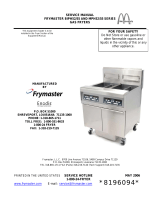 Frymaster MPH52/55 SERIES User manual
Frymaster MPH52/55 SERIES User manual
-
Frymaster RE80 User manual
-
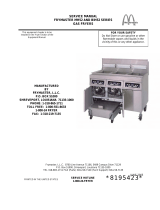 Frymaster MH52 User manual
Frymaster MH52 User manual
-
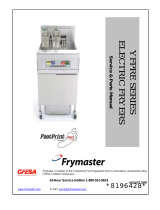 Frymaster 8196428 User manual
Frymaster 8196428 User manual
-
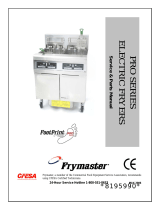 Frymaster PRO User manual
Frymaster PRO User manual
-
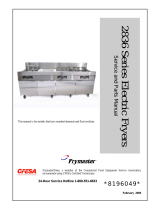 Frymaster 2836 User manual
Frymaster 2836 User manual
-
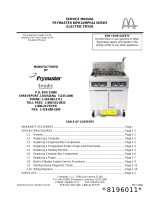 Frymaster BIPH14 User manual
Frymaster BIPH14 User manual
-
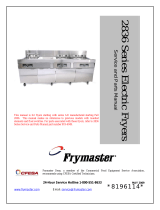 Frymaster 2836 User manual
Frymaster 2836 User manual
-
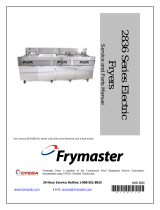 Frymaster 2836 Series Electric Fryers User manual
Frymaster 2836 Series Electric Fryers User manual
-
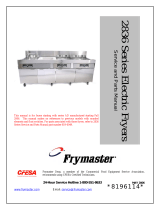 Frymaster FP236 User manual
Frymaster FP236 User manual
Other documents
-
T & S Brass & Bronze Works HG-4F-12 Datasheet
-
Keating TS User manual
-
Keating TS User manual
-
Pitco Frialator AG14S-C User manual
-
Wells Manufacturing F-58DJ Installation guide
-
Blodgett B24C-FF User manual
-
Kohler K-9621-CP Installation guide
-
Bennett Marine ES2000 User manual
-
Thinklogical HDMI Cable Retainers Installation guide
-
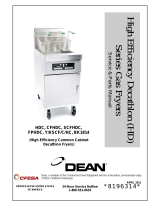 Dean & Deluca BK1814 User manual
Dean & Deluca BK1814 User manual













































































































